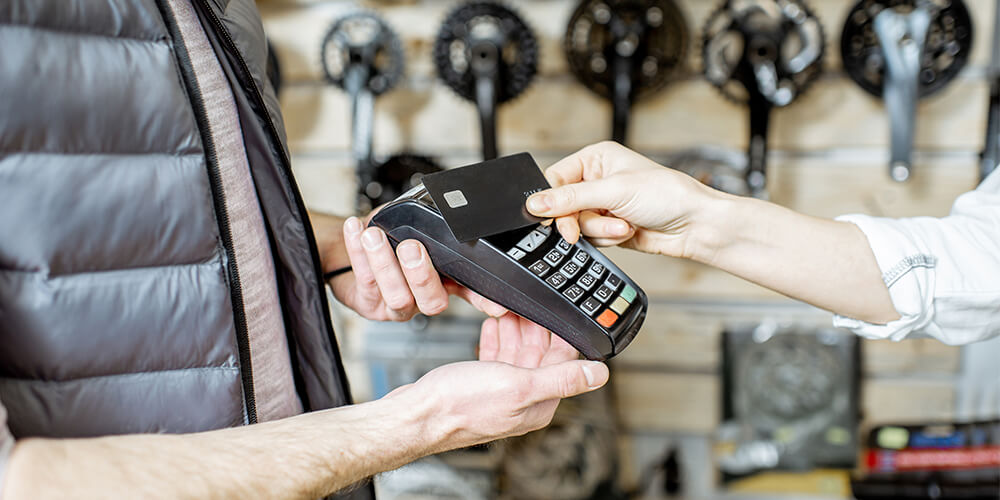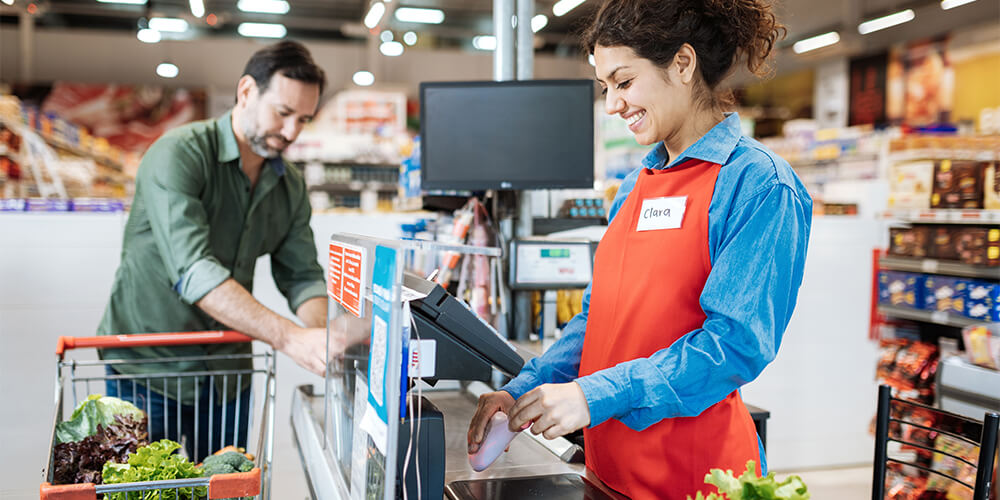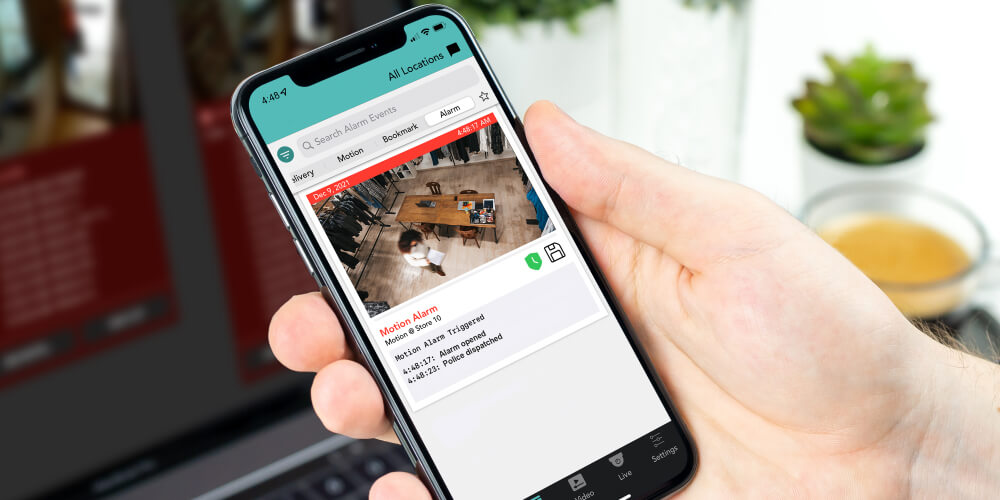Table of Contents
Operational shrink is a major concern for businesses, particularly in retail and supply chain management. It refers to the loss of inventory or revenue due to process inefficiencies, errors, theft, or administrative mistakes. Unlike external shrink caused by shoplifting or fraud, operational shrink is an internal issue stemming from poor inventory control, mismanagement, or lack of oversight.
In this article, we’ll look into the key causes of operational shrink, its impact on businesses, and proven strategies to minimize losses. From improving inventory accuracy to implementing better training and technology, understanding how to combat operational shrink can significantly improve a company’s bottom line. Let’s explore how businesses can take control and reduce these unnecessary losses.
See how businesses are improving their operational efficiency with Solink.
Three types of shrink: internal, external, and operational
Shrinkage can be separated into three main categories:
- Internal shrink
- External shrink
- Operational shrink
When looking at these types of shrink, the first two are clearly forms of theft. Internal shrink is all the theft caused by those within an organization, including employees, service providers, and vendors. External shrink is all the theft by people outside of the organization, including shoplifting and organized retail crime (ORC).
Differently, operational shrinkage is really the losses caused by breakdowns in best practices, such as loss or damaged merchandise, accounting errors, wastage of perishable goods, or pricing errors.
Let’s take a closer look at the different types of shrink.
What is internal shrink?
Internal shrink is just another way of saying internal theft. This bucket of shrink is essentially all theft by people internal to an organization. While some might think internal theft is the same as employee theft, that’s really only part of the issue. Vendors, service providers, and others with intimate knowledge of your business could also be stealing from you.
What is external shrink?
External shrink is just another way of saying external theft. This bucket of shrink is all theft by people outside your organization. There are many forms of external shrink:
- Shoplifting
- Burglary
- Organized retail crime (ORC)
- Armed robbery
- Dine and dash
What is operational shrink?
Operational shrinkage is the third bucket of shrink. While sometimes overlooked, this is to the detriment of your business. That’s because operational shrink can dwarf both internal and external theft. For example, according to some studies, 64% of shrinkage in grocery stores is due to operational breakdowns.
So, what is operational shrink?
Any profits lost due to the breakdown of operational processes can be considered operational shrink. This is anything from damaged merchandise or wastage of perishable goods to scanning and pricing errors leading to goods going out the door for less than the planned price.
Learn how Solink can support your business.
What are the main types of operational shrink?
Every company will have its special sources of operational shrink. For food businesses including grocers and restaurants, improper ordering can be the main source of loss. For clothing stores with new sales every Friday, the major source of operational shrink could be incorrect prices in the point of sale (POS).
Here are nine places you’ll find operational shrink:
- Production planning: When you don’t have the products you need to meet demand, you lose out on sales. When you have more inventory than you can sell, then you are losing money on warehousing and logistics. Any mismatch of supply and demand can lead to operational losses. It’s important to match any production, especially of perishable goods, for example fresh meals in a grocery store, with the expected demand within the selling window.
- Employee and cashier errors: Not every employee error at the POS is intentional theft. Often, employees stack discounts or make other errors by accident. These amount to operational shrink.
- Product handling: Improper product handling can lead to damaged merchandise that either cannot be sold or will be sold at a discount.
- Ordering inefficiencies: Ordering too much can leave stores with excess inventory that will be sold at a discount when out of season. Conversely, not enough inventory will result in lower than expected sales.
- Product rotation: Especially if your products are perishable, then they need to be rotated so the older goods are sold first. This is called first in, first out (FIFO) inventory management. However, even products with no listed shelflife or very long ones should be rotated as they eventually will look old and dusty.
- Damage: Products get damaged in many different ways. Whatever the cause, the result is products that either cannot sell or will sell for a discounted price.
- Accounting: Accounting errors can be devastating to a business. Improper accounting can lead to your accounts receivable not being paid or fines due to late payments on your accounts payable. Even worse, they can lead to problems during tax season.
- Scan file errors: When your prices are wrong in your POS, products are sold at the incorrect price. This can lead to much lower margins than you budgeted for. In some jurisdictions, customers may even be entitled to the product for free if the POS and shelf prices do not match.
- Receiving: Every shipping manifest needs to be checked twice. Receiving errors can leave businesses on the hook for merchandise they did not receive, causing a double hit to their profit margins, both higher cost basis and lower revenue from missing sales.
Learn how Solink can support your business.
Finding and eliminating operational shrink with cloud video security
Operational shrinkage can be found across your organization. Thankfully, the right cloud-based video security system can help you find, track, and reduce operational shrink wherever it is found. Here’s how.
Point of sale
POS monitoring is essential to control all three buckets of shrink. For external shrink, customers can use fraudulent gift cards, returns, and swapped prices to steal at the point of sale. Conversely, for internal shrink, employees can manipulate discounts or skip-scan to steal.
However, POS employee theft is far less common than operational shrinkage that occurs at the cash register. In fact, some estimates suggest there are 21 operational shrink incidents at the POS for every occurrence of intentional theft.
Reviewing high-risk transactions (discounts, voids, no-sale till opens, etc.) paired with video is essential to reduce all shrinkage at the POS. Solink integrates POS data and video without the use of a text inserter box so you can review receipts and video side-by-side.
For operational shrink reduction, you can go even further. Consider auditing transactions that include last week’s sale items on the first day of your new sale cycle to confirm the original prices have been restored in your POS.

Shipping and receiving area
Vendors shorting you is a constant worry, but the fact is most discrepancies are honest mistakes—ones that wouldn’t happen if staff always followed directions. Every order to your retail locations needs to be checked twice to confirm that everything in the manifest was delivered.
Live video security allows you to review all processes at all of your locations in real time from anywhere. This means you can watch staff during receiving hours to confirm they are checking manifests correctly.

Storefront
Products need to be on the floor to have any chance of selling. That means you need to make sure store layout designs are being followed and all items are available for customers to peruse. Camera Linking makes it easy to virtually walk through a store in minutes to confirm all goods are on display and ready to be sold.
The biggest sources of operational shrink in the storefront area are incorrect price tags and not rotating perishable goods. Both of these can be monitored using your video security system.
For example, grocery stores can review the evening clerks’ work to confirm they are rotating goods. Potato chips are a good item to gauge the overall commitment to stock rotation. It’s unlikely that produce or dairy products won’t be rotated as the wastage issues will be seen in days. By the time baking goods go off-code you’ve waited years to diagnose your operation breakdowns. However, potato chips have a shelf life of a couple months, and staff who take care with them are likely doing so throughout the store.

Storage area
One of the biggest operational shrink threats in the storeroom is merchandise being damaged or lost. When damage does occur, it’s important to be able to see how it happened, so mistakes don’t happen twice.
Solink’s motion search allows you to quickly review activity in areas around damaged merchandise to see why goods were damaged so you can make sure it doesn’t happen again.

Store-wide
One serious source of loss comes from false alarm fines. Where law enforcement still responds to burglar alarms, hefty fines are being handed out for false alarms. Video verification solves this. Unlike traditional panel alarm systems, video alarms give you access to your security cameras to confirm there is a real emergency necessitating police response.
Video Alarms Monitoring Service goes one step further, providing a real-time monitored solution. Instead of store managers being notified when the video alarms are triggered, train professionals review the live security footage and decide whether emergency services are needed.

Solink can help you reduce operational shrinkage
Operational shrink can be found throughout a retail business from the storefront to the head office. Installing security cameras in your store isn’t enough. Without an integrated video security system, you don’t have the tools to track down the biggest source of loss for retailers.
To see how Solink can help you tackle operational shrink, sign up for a demo today.

Solink stands at the forefront of security solutions, excelling in loss prevention and asset protection for businesses. Our content is rich in industry expertise and crafted to provide actionable insights and innovative strategies. We empower businesses to enhance their security systems, optimize operations, and protect their assets more effectively. Discover how our advanced cloud video management system can transform your security approach.